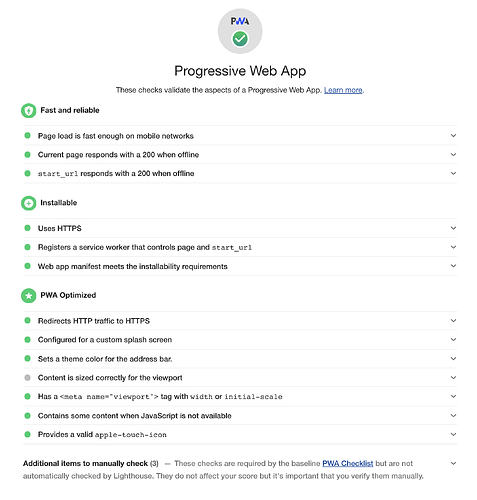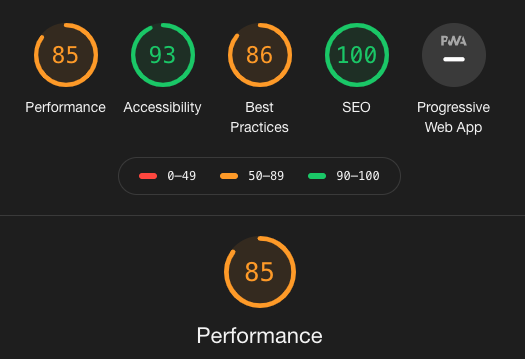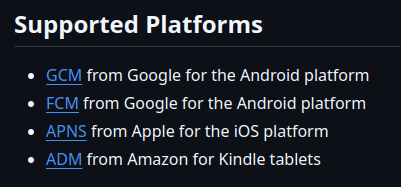Great question @paulishca
Judging by the code referenced, I think you see the problem I have, at an infrastructure privacy level. I notice you gestured to the underlying FQDNs that are generated as endpoints for each class of browser.
I am building Notifications into a PWA template based on Meteor and the goal is to replace text messages ( SMS ) as the most reliable “notification” to summon a participant with a credential and login/session back to the application. Tied in importance to the goal is the priority of having no vendor-lock-in, and no third-party intermediaries. This should run as independently as possible, with the exception of the underlying cloud hosting provider, such as DigitalOcean only accommodating a Virtual Machine instance.
It must survive our design mandates, especially: No "necessary evils"
This is not intended to scale past a few dozen participants at first, and by the time it gets into even the hundreds, it will be refactored overall. That said, I do already have a multi-project infrastructure prepared.
It must be equally reliable on Desktop as Mobile, as a PWA. And all operating systems and all browsers, but at least Linux and Brave/Chrome, Windows and Brave/Chrome, Android and Brave/Chrome, and iOS and Safari.
( Looking at how ugly the Push Notifications are for Chrome-based applications, I might consider moving to Firefox just for that reason unless that can be overcome since they are that bad in Chrome  )
)
This will work in coordination with the client/server/agent design pattern mentioned elsewhere which has been working great in initial real-world tests. So with that I have means to work through the scenarios you mentioned.
Right now the notifications seem to work, using web-push and VAPID keys, but on Firefox I notice the endpoints are a Mozilla FQDN and on Brave / Chrome they are a Google FDQN.
Right now browsers do not feel like “my software installed on my computer” but seem more like a public restroom interface. It would be great to make the browser at least more like my own toilet in my own bathroom at home. Maybe one day browsers can feel like my chair in my library. Or my spot on my sofa. Or my seat in my cockpit of my craft. Short of forking a browser it seems like it is going to be very hard to remove the third-parties at deeper and deeper levels. I just now noticed that includes push notifications. While I understand there need to be standards, and that at scale it is a serious situation to handle messaging queues, it does seem weird to be fundamentally unable to mind my own business at a design layer and not include the browser producer in the communications of participants using a browser.
I am looking forward to getting to the point of focused messaging by push notification to identify a specific location where participation is taking place, whether geographically or a particular login/session, versus pinging all sessions connected via PWA, and then scaling beyond dozens or hundreds if necessary, but right now it seems like the design mandates are failing more than the goal or specific priority.

 )
)